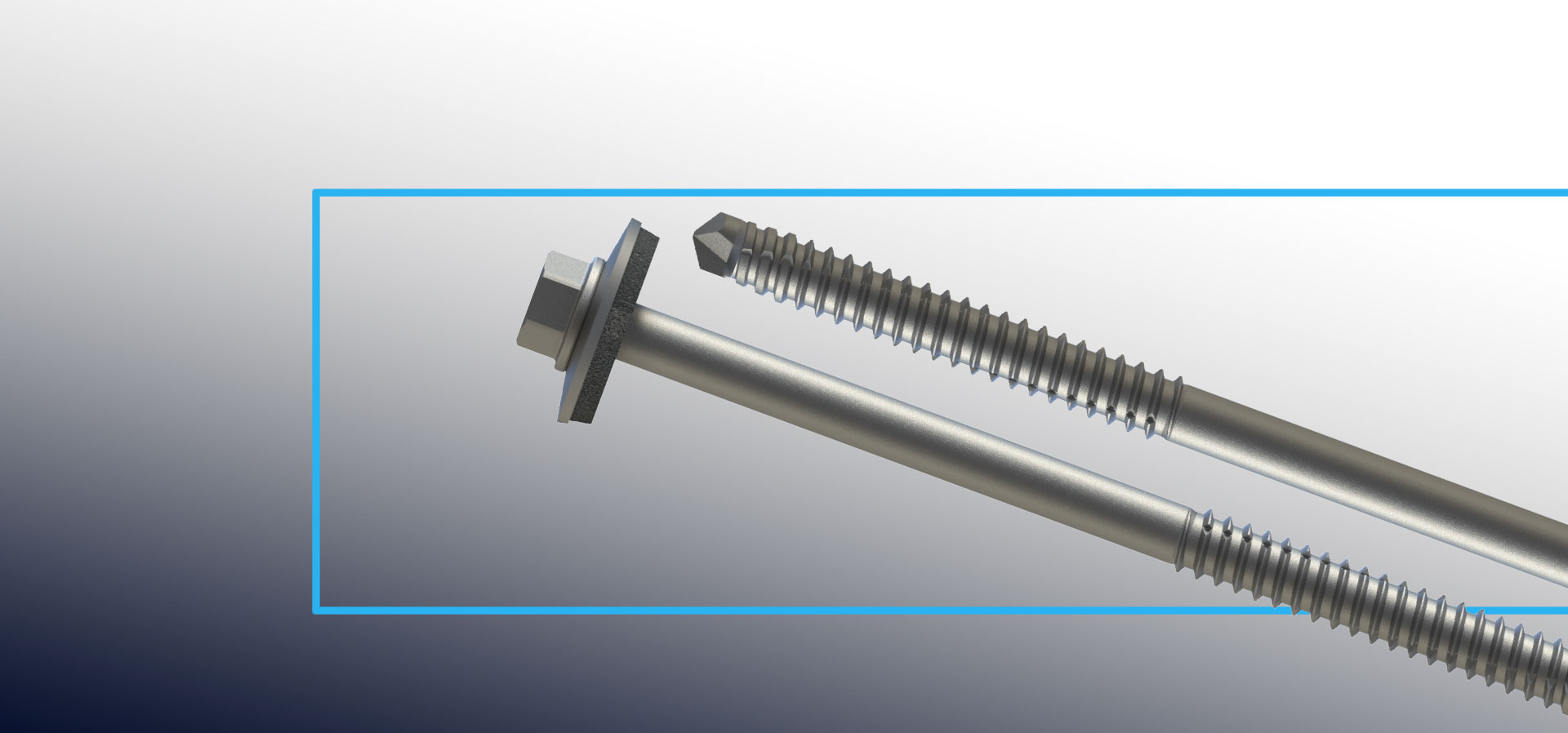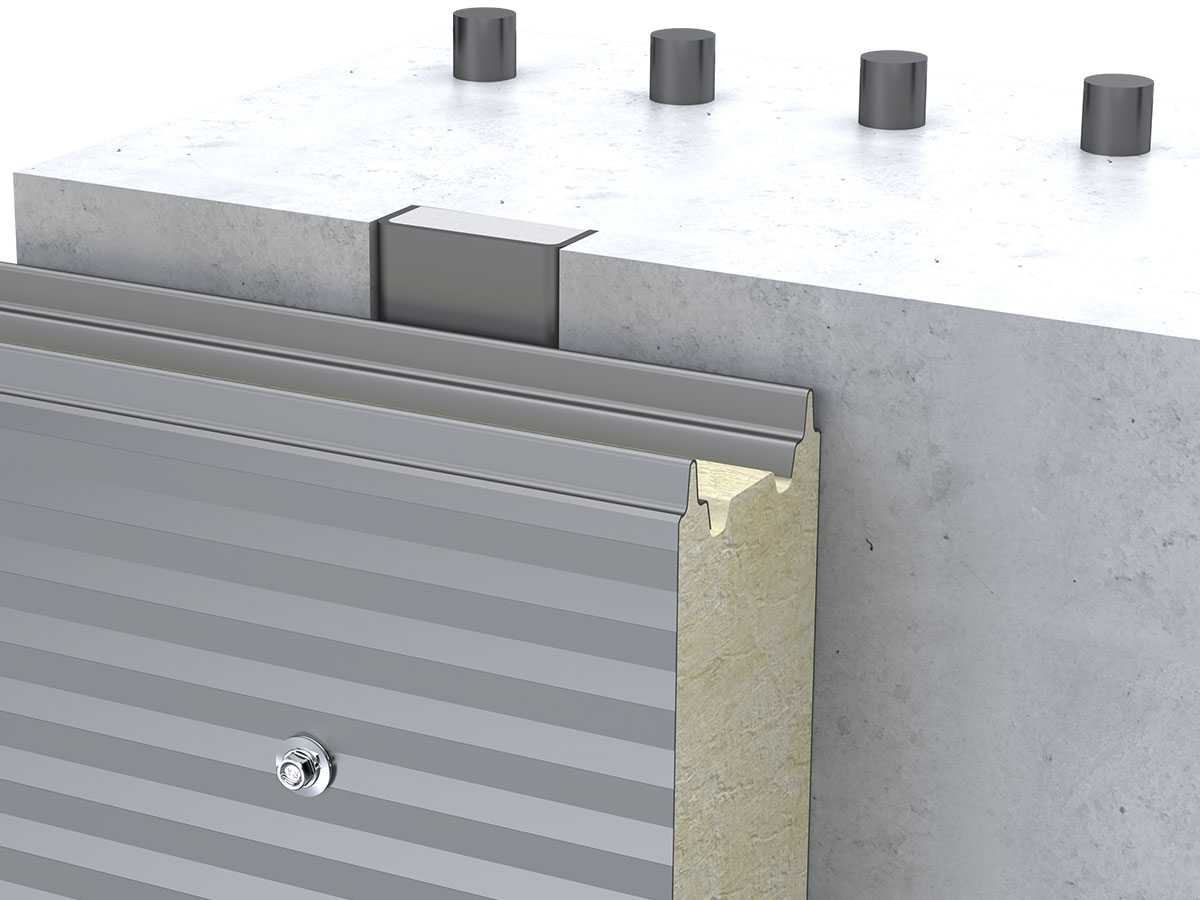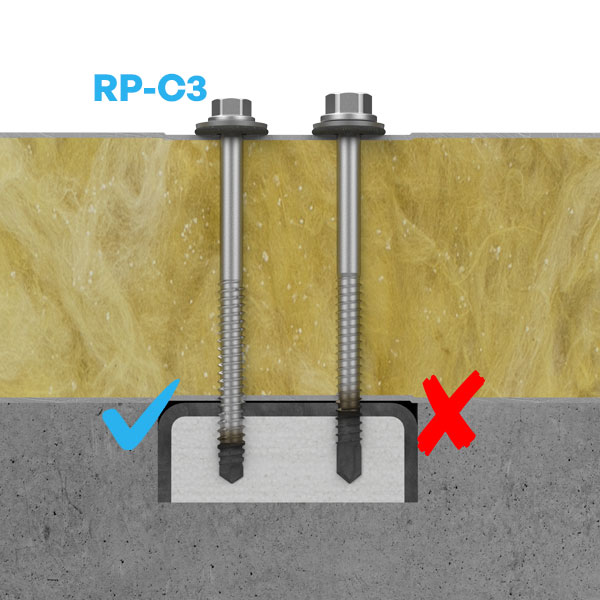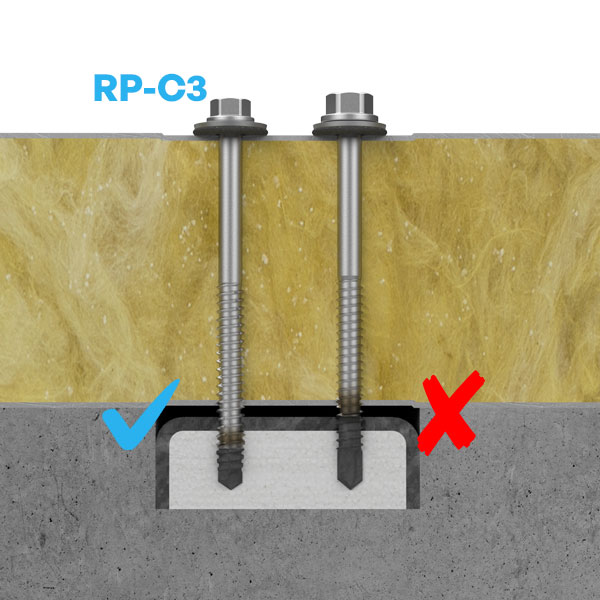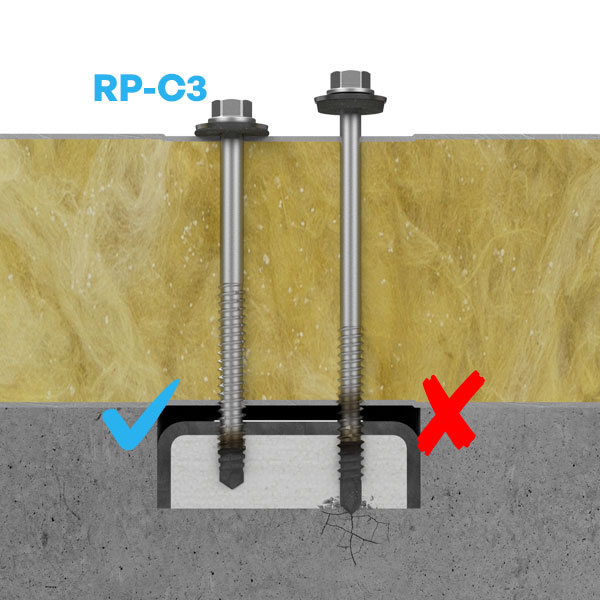The anchor rail fastening pioneer from REISSER
A tool and a screw all in one.
The new RP-C3 bimetal self-drilling screw eliminates the need for pre-drilling when installing roof and wall elements on buildings with a concrete substructure. To fasten roof and wall elements, anchor channels, anchor rails such as HTU rails are usually embedded into the concrete substructure that is later used for mounting onto.
The RP-C3 is the first self-drilling screw used in anchor rail fastening that ensures correct installation in the stainless steel part of the screw thanks to the shortened drilling and furrowing section, thereby saving time and costs as no pre-drilling is required.
High drilling performance - fast finishing
When installing sandwich profiles on concrete anchor rails, it may be necessary to drill through an additional steel sheet (e.g. chequer plate or drip edge plate) in certain screw connection areas.
That’s no problem for the RP-C3 - here too, the self-drilling screw delivers the drilling performance required for the additional steel sheet and eliminates the need for time-consuming pre-drilling.
Guaranteed to be secure in the right area
Fasten securely and in line with the approvals
Conventional self-drilling screws have a relatively long steel pin. When fixing onto low hollow profiles, this means that you always run the risk of fastening in the steel area.
However, fastening in the steel part of the bi-metal screws is not permitted according to the German technical approval (abZ) and the European Technical Assessment (ETA)!
With the RP-C3 you’re on the safe side in every situation. Thanks to their extremely short steel part and the resulting shortened drilling and furrowing area, no damage is caused and neither do you run the risk of fastening in the boundary area or even in the steel area.
The anchor rail sank slightly into the concrete column when it was embedded. The customer selects the next-largest size for the conventional self-drilling screw.
➟ The screw is too long and the drill tip hits the concrete base. A proper connection is not made because the self-drilling screw is overtightened or even breaks off.
